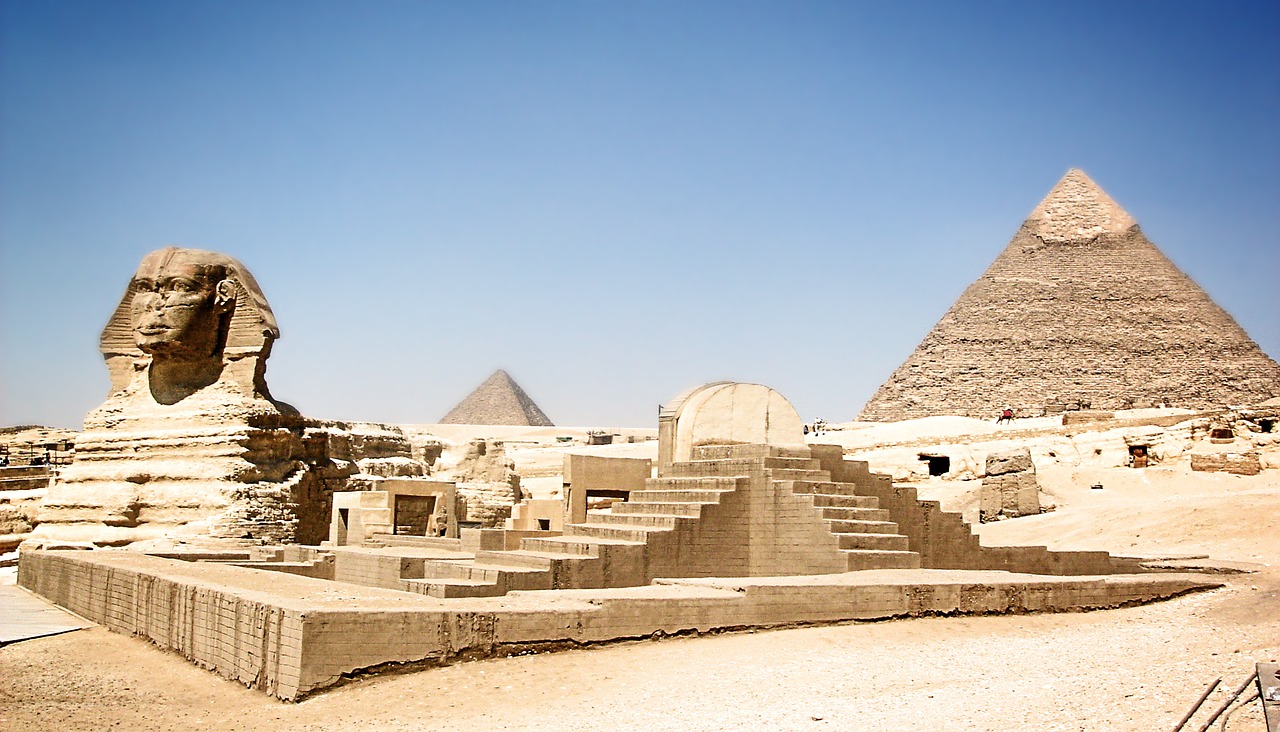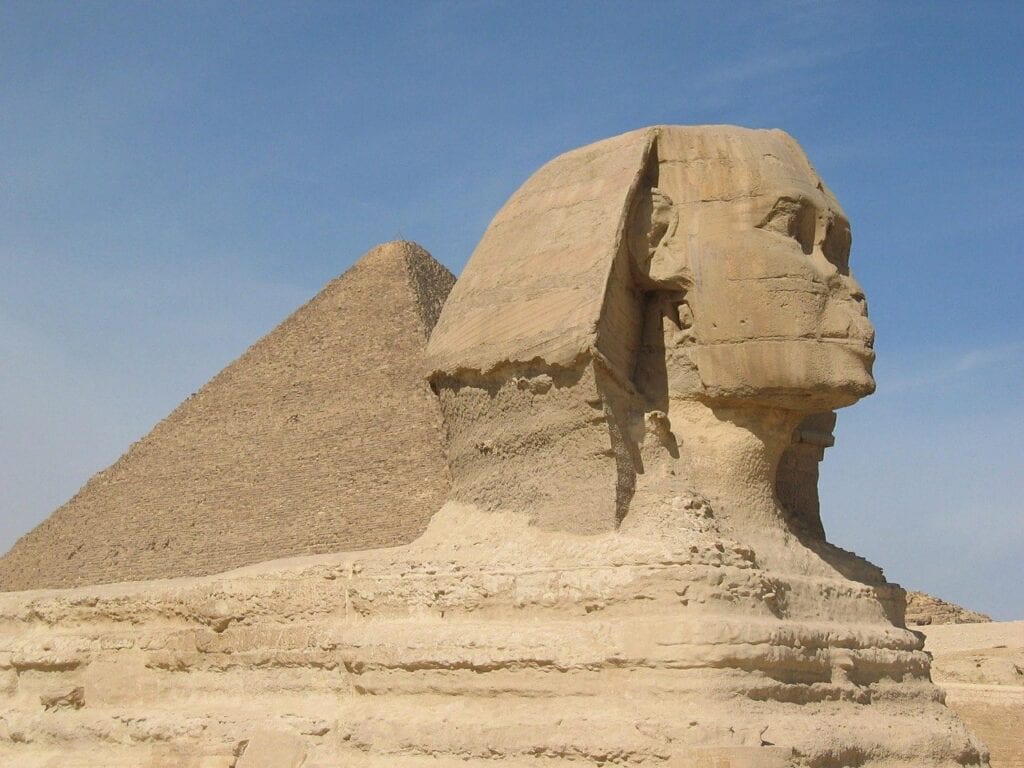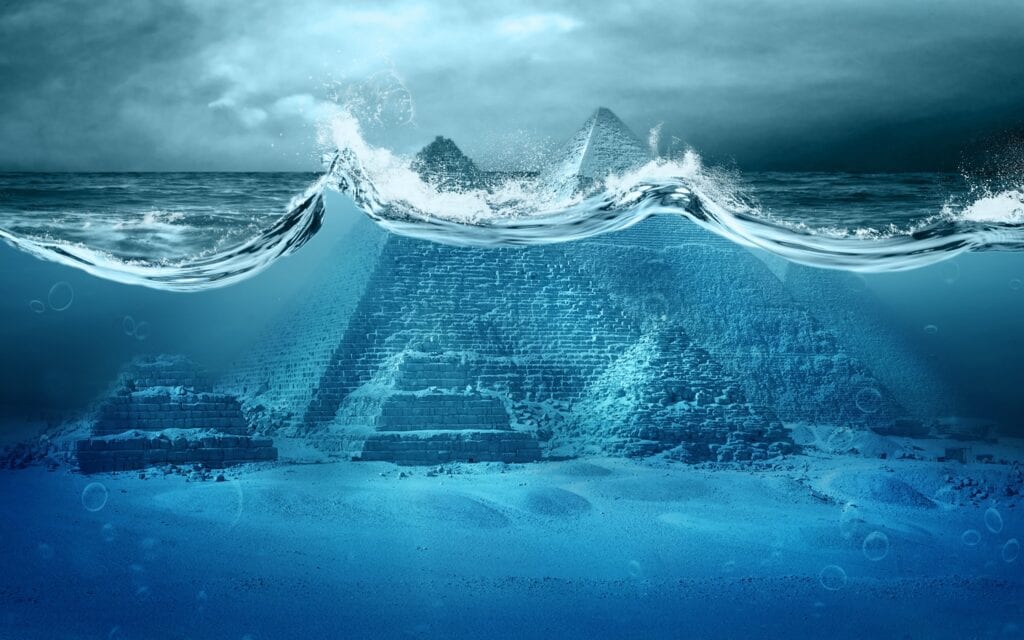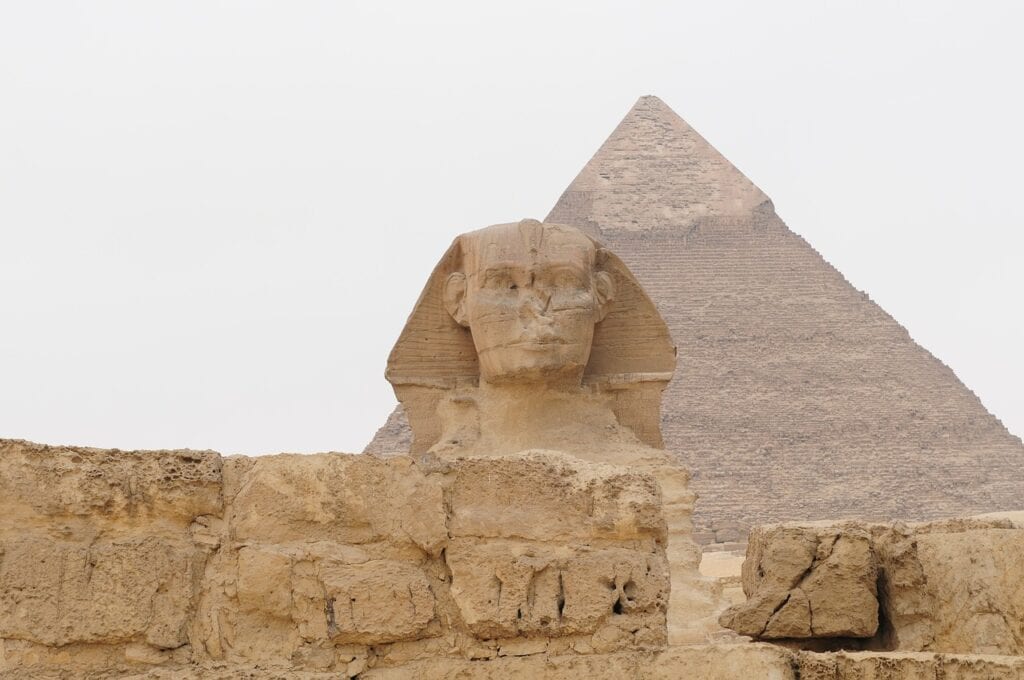The Pyramids and Sphinx: Built before the Great Flood

The Pyramids and Sphinx of the Giza plateau are possibly thousands of years older than mainstream researchers suggest. In fact, these ancient structures could well predate the ancient Egyptian civilization by thousands of years.
Many researchers indicate there is enough evidence to suggest the Giza plateau was heavily flooded in the past. Interestingly, given the evidence found at the Giza plateau, the Pyramids and Sphinx could be some of the megalithic structures that survived the Great Deluge.

Researchers suggest that the Sphinx, the Temple of the Sphinx, and the first 20 fields of the Great Pyramid of Giza exhibit erosion due to deep water saturation.
Much has been said about the Great Pyramid of Giza and its mysterious companion the Great Sphinx of Giza. While we still have absolutely no clue as to who erected the great Pyramid of Giza, and who managed to carve the Great Sphinx, countless theories have been proposed trying to explain two of the most mysterious constructions ever built on the surface of the planet.
‘While many questions remain unanswered about the Great Pyramid of Giza, we still remain perplexed by the complexity and precision of this incredible ancient structure thousands of years after it was created.’
Today there are far more questions than answers when the great pyramid of Giza is discussed between scholars. How is it possible that thousands of years ago, people managed to quarry and transport huge blocks of stone and incorporate them creating one of the most enigmatic ancient structures on Earth. But perhaps the far greater mystery is how ancient mankind managed to align the great pyramid of Giza so precisely. The Great Pyramid of Giza is the most accurately aligned structure in existence and faces true north with only 3/60th of a degree of error. The position of the North Pole moves over time, and the pyramid was exactly aligned at one time. Furthermore, the Great Pyramid is located at the center of the land mass of the earth. The east/west parallel that crosses the most land and the north/south meridian that crosses the most land intersect in two places on the earth, one in the ocean and the other at the Great Pyramid.
However, all of the above isn’t as impressive as the traces of water erosion found on the Giza plateau. Apparently the entire Giza landscape, including the Pyramid and Sphinx displays signs of erosion, suggesting that in the distant past, these magnificent ancient structures were submerged under water.

Dr. Robert M. Schoch was one of the first researchers to really address the theory that the structures of the plateau are much older than previously thought. In the early 90’s, Dr. Schlock suggested that the Sphinx was thousands of years older than archaeologists believed, dating back to 5000-9000 BC, this suggestion was based on erosion pattern of water found at the monuments and the surrounding rocks.
However, Dr. Robert M. Schoch isn’t the only one to suggest that we are looking at evidence that these ancient structures were once submerged.
Archaeologist Sherif El-Morsi suggests that the Giza plateau was once flooded by a surge. The temple site of Menkare, in particular, may have been a former lagoon when the sea level covered the Necropolis, the Sphinx, the complex of temples and other monuments of the area.
“During one of the documentations of the ancient coastline, I almost tripped with a block of the second level of a temple,” said Mr. Morsi in an article published on the website Gigal Research. “To my surprise, the bump on the top surface of the block that almost tripped me was, in fact, a exoskeleton of a fossil of what appears to be an echinoid (sea urchin) which are marine creatures that live in relatively shallow waters.”
El-Morsi believes the flooding was quite significant, peaking at about 75 meters above current sea level and creating a coastline spanning to the Khafra enclosure near the Sphinx at the temple of Menkare. El-Morsi also suggests that there is evidence present at the monuments and surrounding blocks that indicate the presence of tidal waves in the past, and even suggest an intertidal zone of about two meters.
The Mystery of the Great Sphinx
Two Ukranian Scientists, who presented their study at the International Conference of Geoarchaeology and Archaeomineralogy held in Sofia titled: GEOLOGICAL ASPECT OF THE PROBLEM OF DATING THE GREAT EGYPTIAN SPHINX CONSTRUCTION,suggest the Great Sphinx of Giza is hundreds of thousands of years old and present clear indications of water erosion.
“The problem of dating the Great Egyptian Sphinx construction is still valid, despite the long-term history of its research. The geological approach in connection to other scientific-natural methods permits to answer the question about the relative age of the Sphinx. The conducted visual investigation of the Sphinx allowed the conclusion about the important role of water from large water bodies which partially flooded the monument with a formation of wave-cut hollows on its vertical walls.”
Manichev and Parkhomenko firmly believe that the Sphinx had to be submerged for a long time under water and, to support this hypothesis, they point towards existing literature of geological studies of the Giza Plateau. According to Manichev and Parkhomenko, it is the sea level during the Calabrian phase which is the closest to the present mark with the highest GES hollow at its level. High level of sea water also caused the Nile overflowing and created long-living water-bodies. As to time, it corresponds to 800,000 years.
While many people firmly oppose the theories presented by Manichev, Parkhomenko, and Schoch , others strongly believe that the magnificent monuments located today at the Giza plateau, are the ultimate evidence of Pre-flood monuments, built by an entirely different civilization that predates the civilization which inhabited the land of the Pharaohs, possibly even before the ‘Great Flood’, described in numerous ancient texts by different cultures.
While many people oppose the idea that a great flood existed on Earth, researchers estimate that in the last 140,000 thousand years, sea levels have fluctuated by over 120 meters in different parts of the world.

Interestingly, Robert Ballard, one of the best-known underwater archaeologists who in 1985, using a robotic submersible with a remote-controlled camera found the famous shipwreck of the Titanic, probed the depths of the Black Sea near the coast of modern-day Turkey looking for traces of an ancient civilizations that dates back to the times of Noah, indicating that the great biblical flood, mentioned in ancient Sumerian texts was real. Ballard even established a timeline of the events by carbonating shells found along the ancient coastline. Ballard estimates that around 5,000 BC the catastrophic flood occurred, a date that according to many scholars is the date when Noah’s historic flood took place.
Based on all of the above, it isn’t hard to wonder if it is possible that the magnificent Pyramids of Giza, and the Great Sphinx, were in fact built before the Great Flood described in ancient texts.




